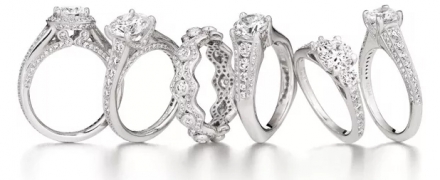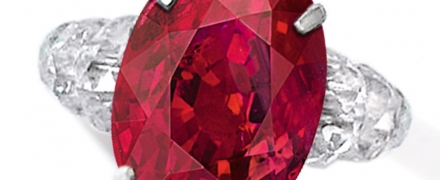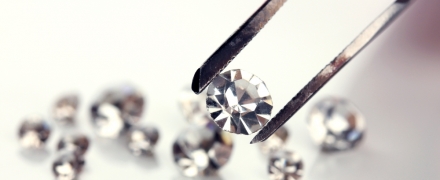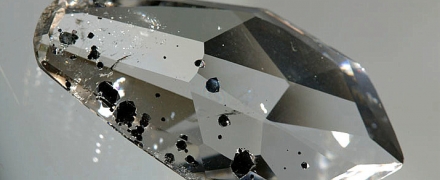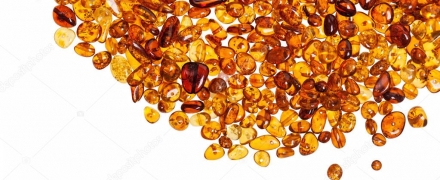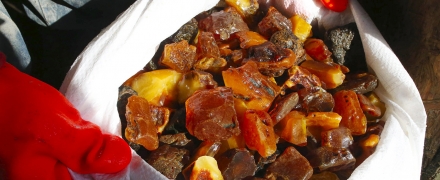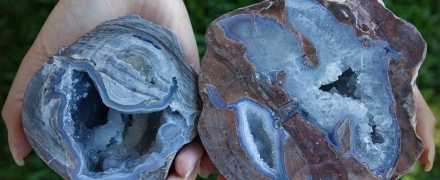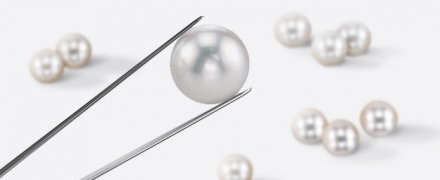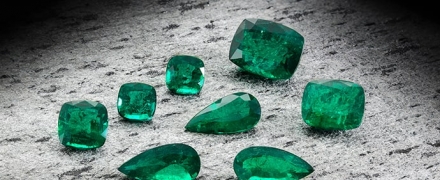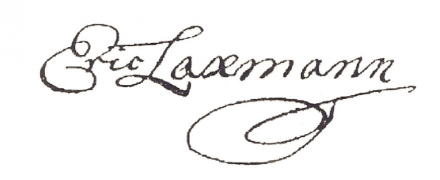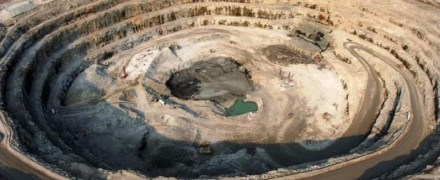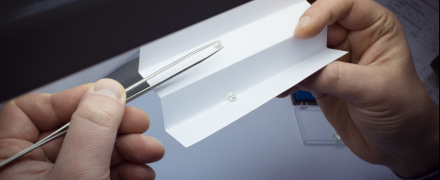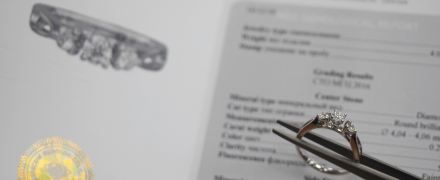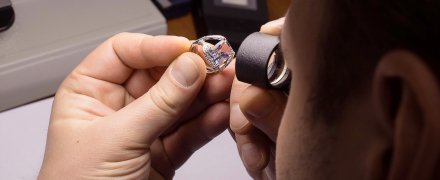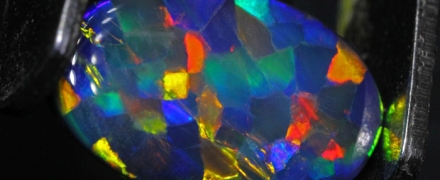open 10 am - 7 pm
laboratory is closed
How to check a diamond for authenticity and determine its nature of origin?
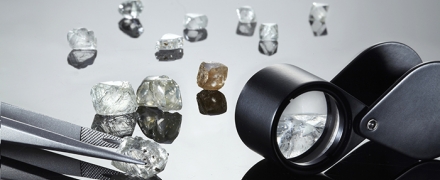
In determining the authenticity of a diamond, a gemologist should determine:
- Is this diamond made of diamond and is it natural;
- Has a diamond been trimmed to improve color and or clarity;
- The quality characteristics of the diamond "4C" - weight, color, quality and cut;
- Does the diamond match the gemological reports that accompany it.
Diagnosis of the stone and its origin
Stone diagnostics in the MGC laboratory occurs in stages:
- A visual inspection in a gemological magnifying glass triplet allows us to draw preliminary conclusions about the material and nature of the stone. As a rule, it is applied at the very beginning of the study of the stone.
- The use of detectors based on the measurement of thermal conductivity, electrical conductivity and refractive index (reflection), allowing to identify imitations, such as moissanite, fianit, leucosapphire and so on.
- Visual inspection in ultraviolet light and in cathode rays. This method in some cases can provide information about the nature of the diamond's origin and possible refinement. Therefore, this stage is mandatory in the identification procedure, not to mention the fact that fluorescence is one of the additional factors for evaluating a diamond.
- The use of spectral-optical equipment of varying degrees of complexity, which allow us to distinguish obviously natural diamonds from the rarely encountered physico-chemical types of natural diamonds and ennobled and synthetic stones.
- Optical microscopic study of inclusions, structural inhomogeneities and color distribution. One of the traditional methods of diagnosis, requiring highly skilled experts.
- The use of spectral analysis methods such as Raman, fluorescent, infrared spectroscopy, spectrophotometry in the visible range of light. This set of methods has the greatest degree of information.
- Additionally, such methods of checking a diamond as the study of its behavior in an electromagnetic field can be used.
The exact sequence of works and the methods of their conduct will give confidence in the accuracy of determining the nature of the formation of a diamond, the presence or absence of refining, which affect the potential investment attractiveness of the stone.
Determining the quality characteristics of a diamond using the 4C system
Characteristics are evaluated in special laboratory conditions requiring special lighting, background viewing and gemological equipment.
Determining the color of a diamond is made by comparing the color of the stone to be examined with reference samples of diamonds, as well as using modern hardware methods.
The determination of the purity of a diamond can be made both by comparison with reference samples, and on the basis of comparison with descriptive characteristics of purity factors. Sometimes special pallets are used, conditionally determining the size, quantity, contrast and location of defects in the stone.
Weight is determined by weighing up to hundredths of a carat on a carat scale with a given accuracy class.
The determination of the quality of the cut of a stone can be made on the basis of a visual inspection of the stone, but various measuring instruments are also commonly used in expert practice. Modern equipment allows us to obtain an estimate of the proportions and symmetry of the stone on the basis of optical-electronic scanning.
The determination of the above characteristics is always made by a board of gemological experts, consisting of at least three specialists, for the independence and objectivity of the obtained examination results.
The definition of diamond treatment
The identification of some types of refining is possible already at the initial stage of study - when viewing a diamond with the help of a magnifying glass triplet. Such types include filling open cracks and cavities in a diamond with highly refractory materials (“glasses”) and laser “drilling” to remove dark or contrasting inclusions, as well as a combination of these methods.
The identification of more complex types of refinement, such as radiation, radiation-thermal upgrading and upgrading under high temperatures and pressures (HPHT) require more complex research methods - from optical microscopic to spectral.
We draw the attention of buyers of diamonds and diamond jewelry to the fact that before buying, it is necessary to carry out an inspection at the gemological center, even if there are expert opinions from international or Russian laboratories.


